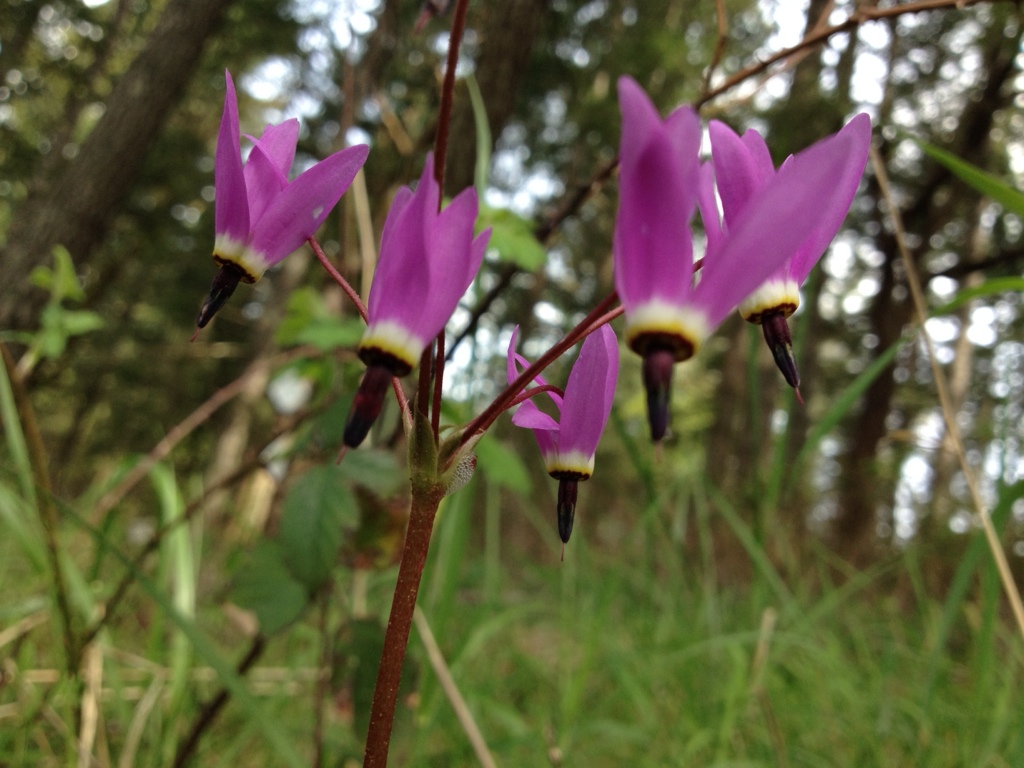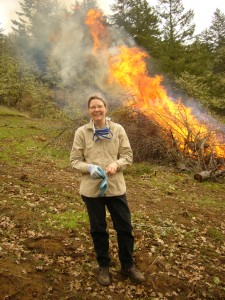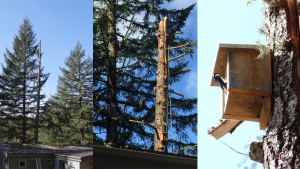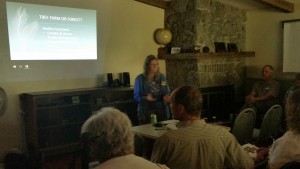Member Spotlight: Oak restoration & attuning to “hidden” wonders

When Jeanie Taylor and her husband, Tom Lenon, saw their forest for the first time they knew it was home. While the 20 acres in the Gopher Valley hills of Yamhill County was riddled with scotch broom and blackberry, it also supported Oregon white oaks and suggested the potential to provide habitat for endangered Fender’s blue butterfly, threatened Kincaid’s lupine, western gray squirrels, western bluebirds and other species endemic to the Willamette Valley. They bought the land with the intent to restore native oak ecosystems and eventually live full-time on the property.

Jeanie and Tom knew it would be work to rehabilitate the historic oak woodland choked by Douglas-fir and scotch broom but they enthusiastically and purposefully embarked on the journey to improve the woodlands and savanna. Oregon white oak ecosystems are among the most endangered ecological communities in the Pacific Northwest. Every acre of this iconic landscape counts. By enhancing oak woodlands, Jeanie and Tom are helping to sustain a patchwork of habitat and biological legacies of this rich -and increasingly rare- habitat-type found in the Willamette Valley-Puget Trough ecoregion.
The many chapters of their restoration endeavor have entailed some quests, a few trials, adventures and unexpected delights. The steps in the effort read more like a saga: removing the Douglas-fir trees through a commercial thinning to free up resources for oaks and grasslands, culling dense thickets of small diameter oak, finding contractors, clearing acres of invasives, forging a buffer between their trail network and abundant poison oak, monitoring gray squirrel populations, building nest boxes and creating snags, seeding rare native flowers, and selling mushroom logs (made from small diameter oaks) at the local farmers market. Add to that, at first they were commuting from Seattle to the McMinnville area and only in the last few years started to live on the property full-time.
The restoration efforts have drawn many partners. Their grown children come to the forest for family work days – highlights include burning slash piles of dead scotch broom. Jeanie and Tom have also worked closely with the Yamhill County Soil and Water Conservation District and local wildlife biologists on many phases of the project.
All of their dedicated hard work has started to reap the desired rewards: healthy oaks, more endemic flowers blooming, and invasives declining. That has been satisfying in and of itself. But Jeanie and Tom have been surprised at how they have become more attune to the ever changing happenings in the forest: “hidden” wonders from the diversity of lichens and invertebrates, to the sound of fog drip in the forest and the differing layers of bird activity in the forest, to the elegant and interwined responses of the ecosystem to the seasons.

Jeanie and her family have learned more about the natural history and the species that inhabit Gopher Valley while regularly working on the land. They’ve also taken classes, studied up on field guides and eBird, and have cultivated a greater awareness for the diversity of wildlife and plants that thrive in oak woodlands. Their deepened understanding of the intricate world of forests and savannas gives them appreciation for how their land plays a part in the greater Willamette Valley ecosystem. To follow along in their adventures, find out about seed sources, and learn ways you can improve wildlife habitat, check out their blog!

Gopher Valley Botanicals (GVB) is a Forest Stewardship Council (FSC)® certified member of NNRG’s FSC® group certificate. They steward 20 acres of Oregon white oak woodland in the Willamette Valley. The oak savanna and woodland of GVB provide refuge to native plants and wildlife – some rare and endemic like Kincaid’s lupine (Lupinus sulphureus ssp. kincaidii), Tolmie star tulip (Calachortus tolmiei), and Fender’s blue butterfly (Icaricia icaroides fenderi).
Photos © Gopher Valley Botanicals.

Leave a Reply